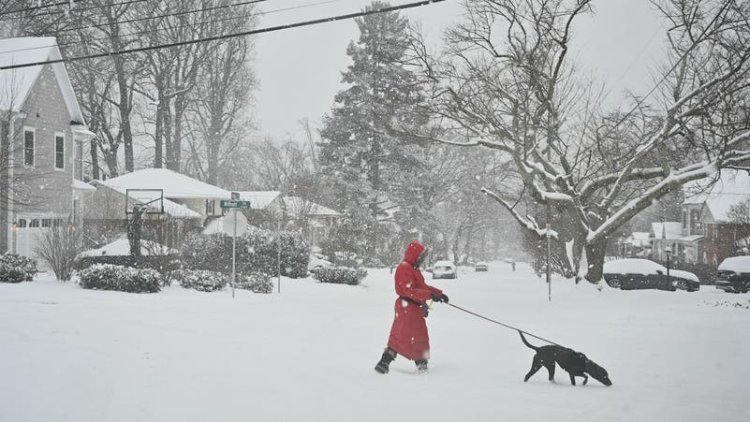The storm is just getting started, and America's weather watch dogs are going missing.
The people who alert us of impending hurricanes, floods, and tornadoes are silently leaving their posts.

By the end of this week, at least 300 National Weather Service (NWS) workers are anticipated to depart, enticed by a federal buyout offer that, while appearing voluntary on paper, highlights long-standing divisions within the organization. Following a string of retirements and already low staffing, this wave of departures could leave dozens of forecast offices dangerously understaffed when the storm season peaks.
In actuality, less than half of the meteorologists assigned to eight of the 122 forecast offices in the country will shortly be working there. According to internal briefings released by Weather Service Director Ken Graham, offices that previously operated with 12 to 15 experts may now manage with just seven or fewer.
The outcome? With much less, a vital public safety organization is being pushed to do more. And the fissures are beginning to appear.
Using Fumes to Forecast the Future
The Weather Service does more than just provide content for your TV show or weather app. It serves as the backbone. They are the first to issue any warning of a tornado, hurricane, blizzard, or wildfire. While the rest of us are asleep, they are the ones who are observing the skies.
Their capacity to react swiftly and thoroughly to weather catastrophes is now in jeopardy, since their workforce has decreased by about 20% from a few years ago.
Skeletal crews are operating at certain offices. Others have managers compelled to return to the front lines, many of whom have not forecast in years. There is a lot of overtime. There are unstaffed shifts. Additionally, one office had to use portable restrooms in the parking lot because of maintenance issues during the recent fatal storms in Kentucky.
Former meteorologist Rep. Eric Sorensen (D-Illinois) stated, "This is not about reducing fat." "The goal here is to safeguard Americans. I sincerely worry about my citizens' safety.
Warning Bells and Weather Balloons
The reduction in weather balloon launches, a silent but essential component of contemporary forecasting, is one of the more alarming trends. The high-altitude data from these twice-daily launches supports weather models and enhances aircraft safety. However, some offices are barely surviving with just one launch per day, while others are completely missing launches due to a lack of workers.
These data gaps are expanding from Rapid City to Denver. For instance, since late March, the balloon location in Valley, Nebraska, has not launched. Additionally, every missing piece of information might result in fewer precise warnings and slower emergency responses as storm systems become more unstable.
"It goes beyond balloons. According to Alan Gerard, a retired leader of the National Severe Storms Lab, "it is about losing the eyes in the sky that we sorely need."
A Slow Attrition Burn
This is a gradual bleed rather than an abrupt collapse. The Weather Service has been falling short of its desired personnel levels even prior to this round of buyouts. Donald Trump took over an agency already battered by budgetary restraints and attrition when he returned to office. However, things have become worse since then. According to union accounts, the NWS has fallen below 4,000 employees for the first time in modern history as a result of buyouts, retirements, and the termination of probationary staff.
In the past few months, over 870 workers at the National Oceanic and Atmospheric Administration (NOAA), which is in charge of the NWS and other vital research missions, have taken offers to leave early. Insiders claim that the administration wants to lay off 1,000 NOAA personnel, and perhaps more if buyouts are not sufficient to avoid a formal Reduction in Force (RIF), which is government jargon for layoffs.
Fixed Budgets and Severe Weather
It could not be worse timed. Climate research is severely hampered by the administration's proposed budget, which cuts NOAA's funding by 27% while maintaining Weather Service spending at the same level. At a time when severe weather events are becoming more common and intense, and more erratic.
Thousands of square miles are still anticipated to be covered by the Weather Service, which will continue to provide life-saving alerts and real-time updates. In addition to ordinary forecasting, each office is in charge of intensifying during severe weather events, frequently doubling or tripling staffing when a calamity is imminent.
However, even routine jobs are at jeopardy when there are fewer workers scheduled. Phones ringing unanswered, balloon launches being skipped, or storm briefings being postponed are all commonplace these days.
The Human Cost
There are individuals behind all the statistics and policy speak—overburdened meteorologists who are sleeping at work during severe weather outbreaks, skipping family dinners, or frantically filling in gaps with duct tape and willpower.
The National Weather Service Employees Organization's legislative director, Tom Fahy, stated that although the staff is still "resilient," it is clearly under stress: "Attrition and retirements have created large voids." The burden is greater than ever, but our workers are still working hard.
The public may not notice a difference in their daily forecast for the time being. We will suffer the repercussions, however, when the next significant tornado outbreak strikes the Midwest or a hurricane roars toward the coast and there are not enough forecasters on duty to detect it in time.
This tale goes beyond the weather.
It is a tale about whether we can keep depending on a life-saving system when the individuals who created it are silently disappearing.







